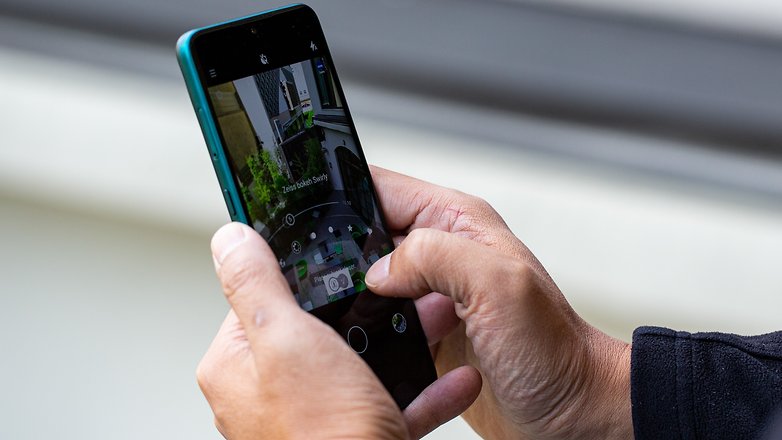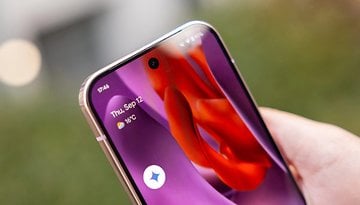The Nokia 7.2 and 6.2 are two mid-range twins, until you look closer


HMD Global is not only the champion when it comes to timely software updates, but also when it comes to updating its own smartphone series. At the IFA in Berlin this week, the Finnish manufacturer is giving two of its strong mid-range smartphones a hardware update. The Nokia 7.2 and Nokia 6.2 look very similar. Can you spot the difference?
There are quite a lot of smartphone fans around the world who are not yet aware that Nokia also has smartphones in its range. And that's despite numerous really good launches. Among the exciting smartphones from the still-young HMD Global is the Nokia 7 Plus, which I consider to be one of the best Nokia smartphones produced under the HMD Global flag. The new Nokia 7.2 and also the 6.2 build on the success of these phones and are intended to ensure that the brand is increasingly associated with modern smartphones.
Designed in the chilly north, but are they cool?
The design of the two new Nokia mid-range smartphones is probably best described as Nordic cool. Whether the user feels this is cool or not is up to each individual to decide for themselves. The Nokia 7.2, as well as the Nokia 6.2, are admirable for their workmanship, which is first-class. This is ensured by a material that HMD Global describes as a vacuum-metalized polymer composite with 2.5D Gorilla Glass. In any case, it feels high-quality and it's definitely not plastic-like to the touch.

Just look at that display
HMD Global relies on LCD-based displays for its mid-range displays. A small dewdrop notch is at the top of the 6.3-inch IPS panel with a Full HD+ resolution. While many smartphones manufacturers opting for a dewdrop notch have the notification LED chopped out, HMD Global has found a way to integrate this feature into both smartphones, in the power button. In the centre of the on/off switch is an LED that lights up when incoming notifications are received or when the smartphone is charging.

Both smartphones feature a maximum brightness of 500 nits, a 1:1500 contrast ratio, HDR10 and the ability to convert SDR content to HDR. My first impression of the displays of the sample units at the IFA was that they definitely shine with a colorful and high-contrast display. For the software, Nokia uses Android One again. The software running on the phones we tested was not yet final, and there may be some changes to the settings before launch.

With Zeiss or without, that's the question
The main difference between the Nokia 7.2 and the 6.2 is already visible on the back. Nokia fans will find Zeiss lettering on the more expensive 7.2, as the lens specialist and long-time Nokia partner has been involved here once again. The Nokia 7.2's triple-camera unit consists of a 48-megapixel main camera, an 8-megapixel wide-angle sensor with a 118-degree field of view, and a 5-megapixel depth sensor. The front camera of the Nokia 7.2 takes pictures with 20 megapixels and also has a Zeiss lens.

Zeiss worked on the Nokia 7.2 software as well as the optics. In the camera software, which was not yet final on our demo devices, you could emulate a bokeh effect in various ways in portrait mode. Instead of just a classic blur, there are possibilities to decorate it with filters names things like "creamy" to "modern" or even add hearts or stars.

If Zeiss is working on the Nokia 7.2 camera, then, of course, a dedicated night mode is a must in 2019. This night mode should be able to detect whether you are shooting a photo freehand or from a tripod. Depending on the situation, the smartphone then shoots and stacks up to 20 individual images in order to deliver a noise-free low-light photo. HMD says the Nokia 7.2 still delivers usable images at 0.1 lux - even during a clear full moon night. If this is really the case, we will have to check it out after receiving a test device.

For the Nokia 6.2, HMD Global does without Zeiss lenses and software options. For cost reasons, a different setup is also chosen for the sensors. While selfies shots are available from the front 8-megapixel camera, there is also a triple camera on the back of the 6.2, but the main sensor has "only" a 16-megapixel image sensor. The depth sensor and wide-angle are again identical with the 7.2.
Minor differences on the inside
While the differences between the Nokia 7.2 and the 6.2 are hardly recognizable on the outside, you have to take a closer look at the technical specs and the internal components to spot change. The Nokia 7.2, which costs €50 more than the 6.2, features a Snapdragon 660 instead of a 636. The Nokia 7.2 also has Qualcomm's aptX audio codec and can download data with up to 300 M/bits thanks to LTE Cat 6.2, while the 6.2 only supports LTE Cat 4 with a maximum of 150 M/bits.
The price is hot, for both smartphones
HMD Global will launch Nokia 6.2 and 7.2 in early October. The price of the Nokia 6.2 is €249, while the Nokia 7.2 is €299. The Nokia 6.2 is available in two colors; Ceramic Black and Ice. For 7.2 there is one more color, Cyan Green, and all color variants are matted here. We ill update you on price and availability in the UK and U.S. markets as soon as we have that information.



















